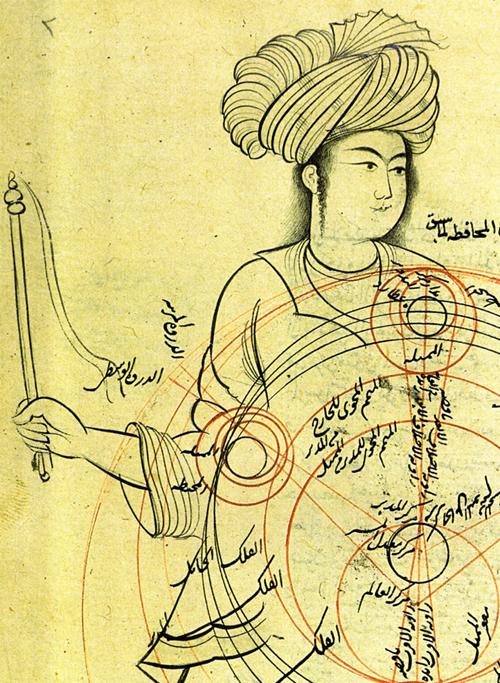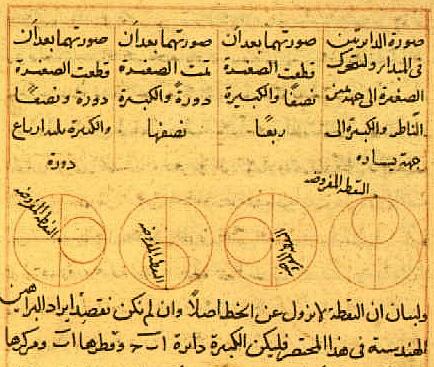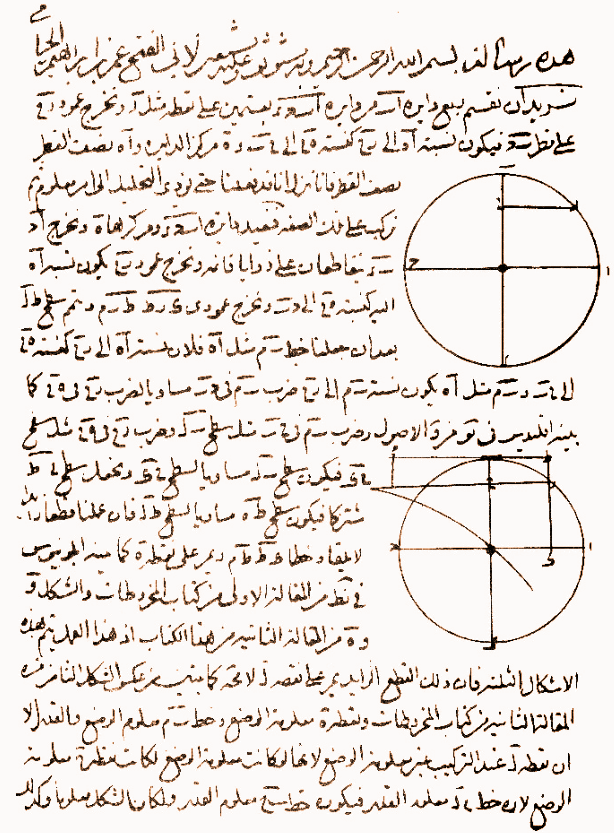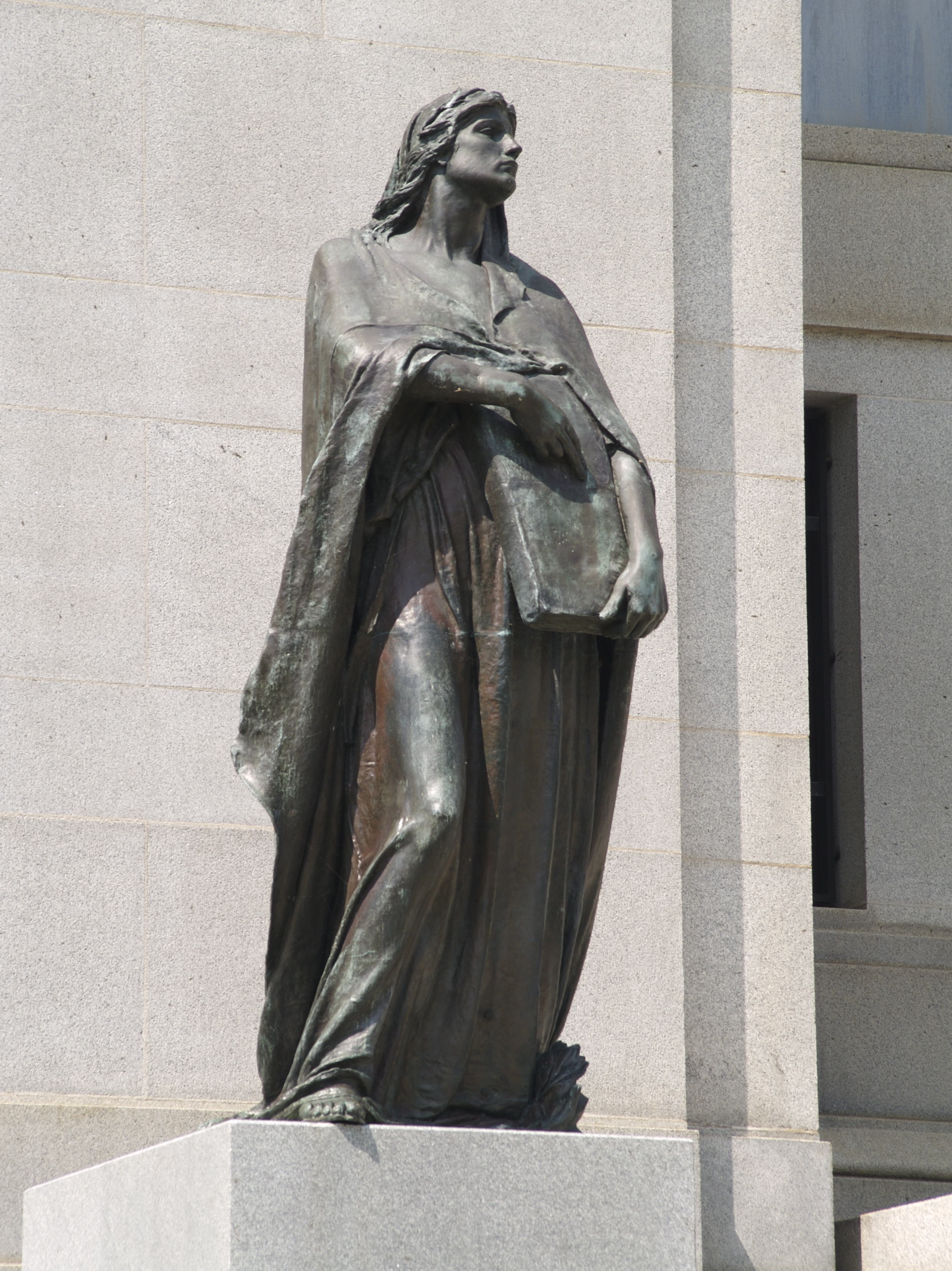|
Al-Karajī
(; c. 953 – c. 1029) was a 10th-century Persian mathematician and engineer who flourished at Baghdad. He was born in Karaj, a city near Tehran. His three principal surviving works are mathematical: ''Al-Badi' fi'l-hisab'' (''Wonderful on calculation''), ''Al-Fakhri fi'l-jabr wa'l-muqabala'' (''Glorious on algebra''), and ''Al-Kafi fi'l-hisab'' (''Sufficient on calculation''). Work Al-Karaji wrote on mathematics and engineering. Some consider him to be merely reworking the ideas of others (he was influenced by Diophantus) but most regard him as more original, in particular for the beginnings of freeing algebra from geometry. Among historians, his most widely studied work is his algebra book ''al-fakhri fi al-jabr wa al-muqabala'', which survives from the medieval era in at least four copies. He expounded the basic principles of hydrology and this book reveals his profound knowledge of this science and has been described as the oldest extant text in this field. He system ... [...More Info...] [...Related Items...] OR: [Wikipedia] [Google] [Baidu] |
Mathematical Induction
Mathematical induction is a method for mathematical proof, proving that a statement P(n) is true for every natural number n, that is, that the infinitely many cases P(0), P(1), P(2), P(3), \dots all hold. This is done by first proving a simple case, then also showing that if we assume the claim is true for a given case, then the next case is also true. Informal metaphors help to explain this technique, such as falling dominoes or climbing a ladder: A proof by induction consists of two cases. The first, the base case, proves the statement for n = 0 without assuming any knowledge of other cases. The second case, the induction step, proves that ''if'' the statement holds for any given case n = k, ''then'' it must also hold for the next case n = k + 1. These two steps establish that the statement holds for every natural number n. The base case does not necessarily begin with n = 0, but often with n = 1, and possibly with any fixed natural number n = N, establishing the trut ... [...More Info...] [...Related Items...] OR: [Wikipedia] [Google] [Baidu] |
Karaj
Karaj (; ) is a List of cities in Iran by province, city in the Central District (Karaj County), Central District of Karaj County, Alborz province, Alborz province, Iran, serving as capital of the province, the county, and the district. Earliest evidence of inhabitation in Karaj can be dated to the Bronze Age at Tepe Khurvin. The city was developed under the rule of the Safavid Iran, Safavid and Qajar Iran, Qajar Empire and is home to historical buildings and memorials from those eras. This city has a unique climate due to access to natural resources such as many trees, rivers, and green plains. After Tehran, Karaj is the largest immigrant-friendly city in Iran, so it has been nicknamed "Little Iran." Although the county hosts a population around 1.97 million, as recorded in the 2016 census, most of the county is rugged mountain. The urban area is the fourth-largest in Iran, after Tehran, Mashhad, and Isfahan. Eshtehard County and Fardis County were split off from Karaj Coun ... [...More Info...] [...Related Items...] OR: [Wikipedia] [Google] [Baidu] |
Ibn Yahyā Al-Maghribī Al-Samaw'al
Al-Samawʾal ibn Yaḥyā al-Maghribī (, c. 1130 – c. 1180), commonly known as Samawʾal al-Maghribi, was a mathematician, astronomer and physician. Born to a Jewish family of North African origin, he concealed his conversion to Islam for many years for fear of offending his father, then openly embraced Islam in 1163 after he had a dream telling him to do so. His father was a rabbi from North Africa named Yehuda ibn Abūn. Mathematics Al-Samaw'al wrote the mathematical treatise ''al-Bahir fi'l-jabr'', meaning "The brilliant in algebra", at the age of nineteen. He also used the two basic concepts of mathematical induction, though without stating them explicitly. He used this to extend results for the binomial theorem up to n=12 and Pascal's triangle previously given by al-Karaji. Polemics He also wrote a famous polemic book in Arabic debating Judaism known as ''Ifḥām al-Yahūd'' (''Confutation of the Jews''). A Latin tract translated from Arabic and later translated in ... [...More Info...] [...Related Items...] OR: [Wikipedia] [Google] [Baidu] |
10th-century Iranian Mathematicians
1 (one, unit, unity) is a number, numeral, and glyph. It is the first and smallest positive integer of the infinite sequence of natural numbers. This fundamental property has led to its unique uses in other fields, ranging from science to sports, where it commonly denotes the first, leading, or top thing in a group. 1 is the unit of counting or measurement, a determiner for singular nouns, and a gender-neutral pronoun. Historically, the representation of 1 evolved from ancient Sumerian and Babylonian symbols to the modern Arabic numeral. In mathematics, 1 is the multiplicative identity, meaning that any number multiplied by 1 equals the same number. 1 is by convention not considered a prime number. In digital technology, 1 represents the "on" state in binary code, the foundation of computing. Philosophically, 1 symbolizes the ultimate reality or source of existence in various traditions. In mathematics The number 1 is the first natural number after 0. Each natural numbe ... [...More Info...] [...Related Items...] OR: [Wikipedia] [Google] [Baidu] |
1029 Deaths
Year 1029 ( MXXIX) was a common year starting on Wednesday of the Julian calendar. Events By place Asia * March/April: The Ghaznavid Sultan Maḥmūd sacks brutally the city of Rayy after having received a request for help by its Buyyid ruler Majd al-Dawla for help against his rebellious troops. He crucifies a large number of the local population and burns many books that he considers heretical. Europe * Prince Pandulf IV of Capua becomes the '' de facto'' ruler of southern Italy – holding Capua and Naples himself – this in support with his powerful allies Amalfi, Salerno and Benevento. Only the Duchy of Gaeta remains out of his grasp. * Rainulf Drengot, head of a mercenary band of Norman knights, is approached by Duke John V of Gaeta and is persuaded to change sides. With Norman help, Duke Sergius IV recovers Naples from Capuan occupation. * Duke Bretislav I (Bohemian Achilles) of Bohemia of the Přemyslid Dynasty reconquers Moravia from Poland (approxi ... [...More Info...] [...Related Items...] OR: [Wikipedia] [Google] [Baidu] |
950s Births
95 or 95th may refer to: * 95 (number) * one of the years 95 BC, AD 95, 1995, 2095, etc. * 95th Division (other) * 95th Regiment ** 95th Regiment of Foot (other) * 95th Squadron (other) * Atomic number 95: americium * Interstate 95, the main north–south Interstate Highway on the East Coast of the United States * Microsoft Office 95, a major release of Microsoft Office * Saab 95, a station wagon * Windows 95 Windows 95 is a consumer-oriented operating system developed by Microsoft and the first of its Windows 9x family of operating systems, released to manufacturing on July 14, 1995, and generally to retail on August 24, 1995. Windows 95 merged ..., a consumer-oriented operating system * 95 Arethusa, a main-belt asteroid See also * 9 to 5 (other) * * List of highways numbered {{Numberdis ... [...More Info...] [...Related Items...] OR: [Wikipedia] [Google] [Baidu] |
Mariusz Wodzicki
Mariusz Wodzicki (Polish: ; born 1956) is a Polish mathematician and professor of mathematics at the University of California, Berkeley, whose works primarily focus on analysis, algebraic k-theory, noncommutative geometry, and algebraic geometry. Life and career Wodzicki was born in Bytom, Poland in 1956. He received a MSc from Moscow State University in 1980, and he completed his doctoral degree in 1984 at the Steklov Institute of Mathematics in Moscow under the advisement of Yuri Manin (Spectral Asymmetry and Zeta-Functions). In 1985–1986 he was a research assistant at the Mathematical Institute, University of Oxford, after which he became an assistant professor at the Mathematical Institute of the Polish Academy of Sciences. He is currently a professor of mathematics at the University of California, Berkeley. In 1992, Wodzicki was an invited speaker of the European Congress of Mathematics in Paris (Algebraic K-theory and functional analysis). In 1994, he was an invited sp ... [...More Info...] [...Related Items...] OR: [Wikipedia] [Google] [Baidu] |
List Of Iranian Scientists
The following is a list of Iranian scientists, engineers, and scholars who lived from antiquity up until the beginning of the modern age. A * Abdul Qadir Gilani (12th century) theologian and philosopher * Abu al-Qasim Muqane'i (10th century) physician * Abu Dawood (c. 817–889), Islamic scholar * Abu Hanifa (699–767), Islamic scholar * Abu Said Gorgani (10th century) * 'Adud al-Dawla (936–983), scientific patron * Ahmad ibn Farrokh (12th century), physician * Ahmad ibn 'Imad al-Din (11th century), physician and chemist * Alavi Shirazi (1670–1747), royal physician in Mughal India * Amuli, Muhammad ibn Mahmud (c. 1300–1352), physician * Abū Ja'far al-Khāzin (900–971), mathematician and astronomer * Ansari, Khwaja Abdullah (1006–1088), Islamic scholar * Aqa-Kermani (18th century), physician * Aqsara'i (?–1379), physician * Abu Hafsa Yazid, physician * Arzani, Muqim (18th century), physician * Astarabadi (15th century), physician * Aufi, Muhammad (1 ... [...More Info...] [...Related Items...] OR: [Wikipedia] [Google] [Baidu] |
Science In Medieval Islam
Science in the medieval Islamic world was the science developed and practised during the Islamic Golden Age under the Abbasid Caliphate of Baghdad, the Umayyads of Córdoba, the Abbadids of Seville, the Samanids, the Ziyarids and the Buyids in Persia and beyond, spanning the period roughly between 786 and 1258. Islamic scientific achievements encompassed a wide range of subject areas, especially astronomy, mathematics, and medicine. Other subjects of scientific inquiry included alchemy and chemistry, botany and agronomy, geography and cartography, ophthalmology, pharmacology, physics, and zoology. Medieval Islamic science had practical purposes as well as the goal of understanding. For example, astronomy was useful for determining the ''Qibla'', the direction in which to pray, botany had practical application in agriculture, as in the works of Ibn Bassal and Ibn al-'Awwam, and geography enabled Abu Zayd al-Balkhi to make accurate maps. Islamic mathematicians such as Al-Kh ... [...More Info...] [...Related Items...] OR: [Wikipedia] [Google] [Baidu] |
Mathematics In Medieval Islam
Mathematics during the Golden Age of Islam, especially during the 9th and 10th centuries, was built upon syntheses of Greek mathematics (Euclid, Archimedes, Apollonius) and Indian mathematics (Aryabhata, Brahmagupta). Important developments of the period include extension of the place-value system to include decimal fractions, the systematised study of algebra and advances in geometry and trigonometry. The medieval Islamic world underwent significant developments in mathematics. Muhammad ibn Musa al-Khwārizmī played a key role in this transformation, introducing algebra as a distinct field in the 9th century. Al-Khwārizmī's approach, departing from earlier arithmetical traditions, laid the groundwork for the arithmetization of algebra, influencing mathematical thought for an extended period. Successors like Al-Karaji expanded on his work, contributing to advancements in various mathematical domains. The practicality and broad applicability of these mathematical metho ... [...More Info...] [...Related Items...] OR: [Wikipedia] [Google] [Baidu] |
Squared Triangular Number
In number theory, the sum of the first cubes is the square of the th triangular number. That is, :1^3+2^3+3^3+\cdots+n^3 = \left(1+2+3+\cdots+n\right)^2. The same equation may be written more compactly using the mathematical notation for summation: :\sum_^n k^3 = \left(\sum_^n k\right)^2. This identity is sometimes called Nicomachus's theorem, after Nicomachus of Gerasa ( – ). History Nicomachus, at the end of Chapter 20 of his ''Introduction to Arithmetic'', pointed out that if one writes a list of the odd numbers, the first is the cube of 1, the sum of the next two is the cube of 2, the sum of the next three is the cube of 3, and so on. He does not go further than this, but from this it follows that the sum of the first n cubes equals the sum of the first \tfrac odd numbers, that is, the odd numbers from 1 to n(n+1)-1. The average of these numbers is obviously \tfrac, and there are \tfrac of them, so their sum is \left(\tfrac\right)^2. Many early mathematicians have stud ... [...More Info...] [...Related Items...] OR: [Wikipedia] [Google] [Baidu] |
Truth
Truth or verity is the Property (philosophy), property of being in accord with fact or reality.Merriam-Webster's Online Dictionarytruth, 2005 In everyday language, it is typically ascribed to things that aim to represent reality or otherwise correspond to it, such as beliefs, propositions, and declarative sentences. True statements are usually held to be the opposite of false statement, false statements. The concept of truth is discussed and debated in various contexts, including philosophy, art, theology, law, and science. Most human activities depend upon the concept, where its nature as a concept is assumed rather than being a subject of discussion, including journalism and everyday life. Some philosophers view the concept of truth as basic, and unable to be explained in any terms that are more easily understood than the concept of truth itself. Most commonly, truth is viewed as the correspondence of language or thought to a mind-independent world. This is called the correspon ... [...More Info...] [...Related Items...] OR: [Wikipedia] [Google] [Baidu] |





